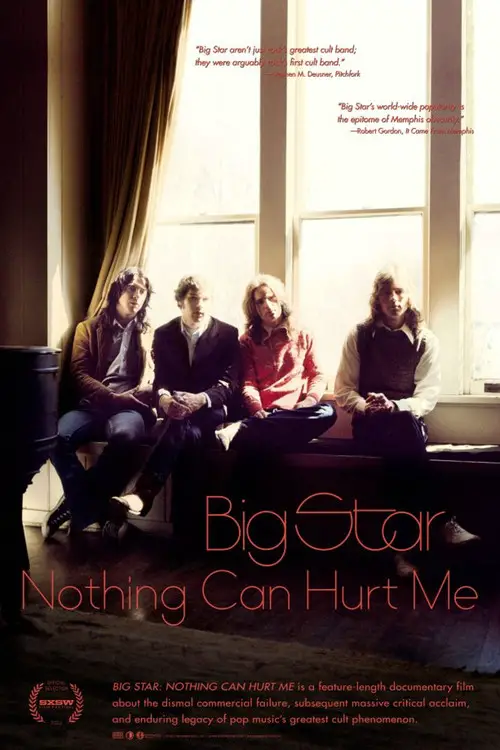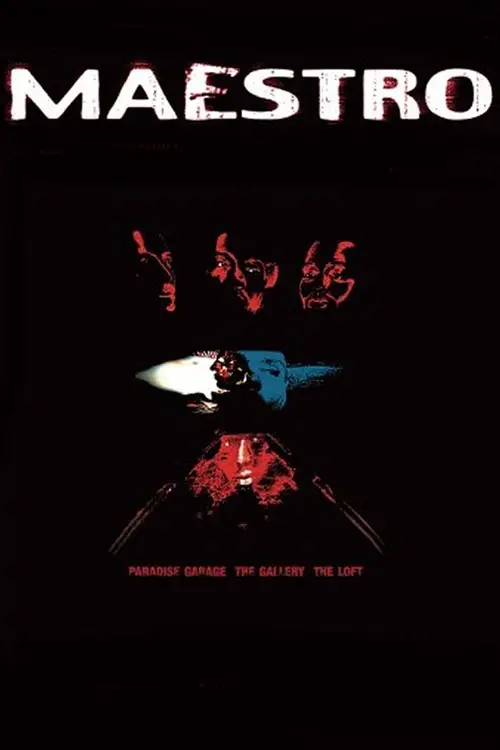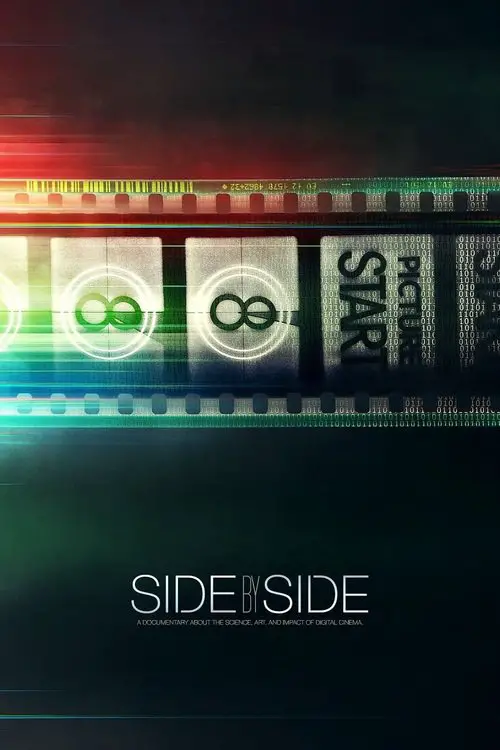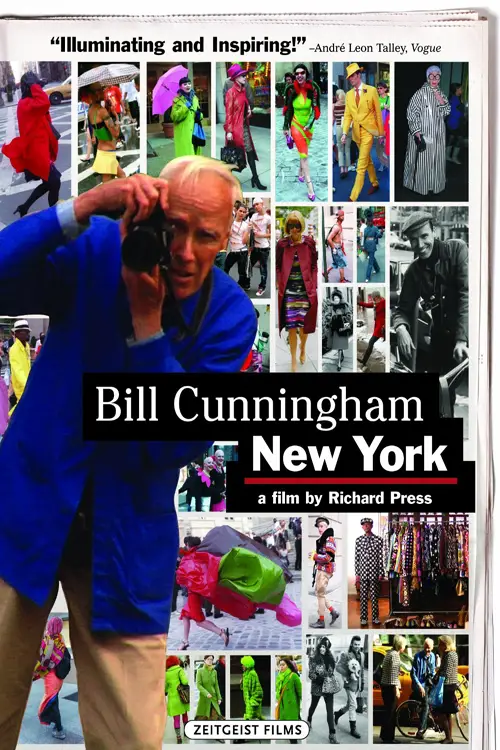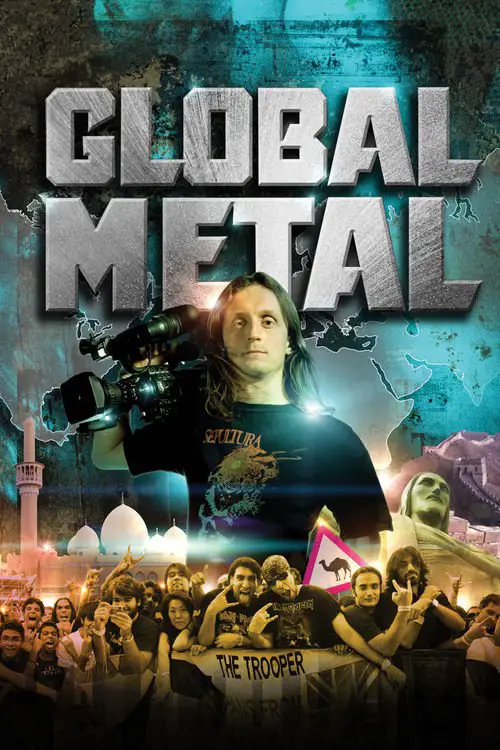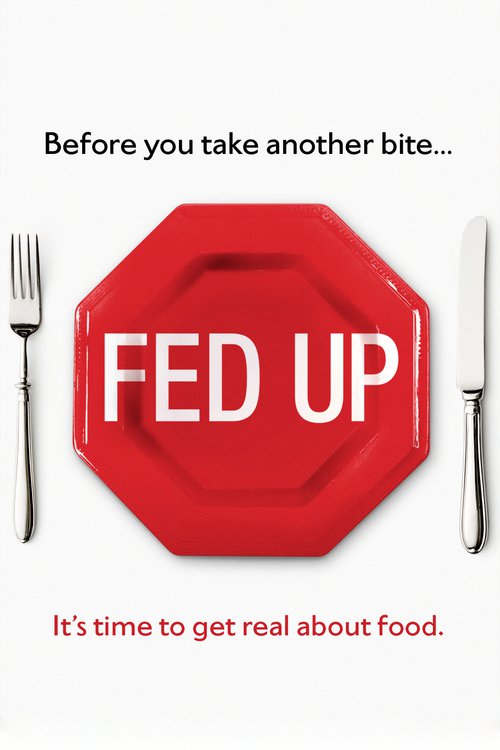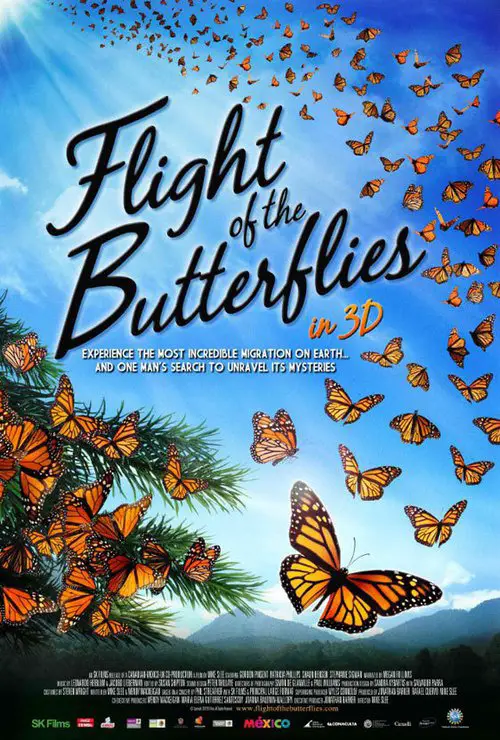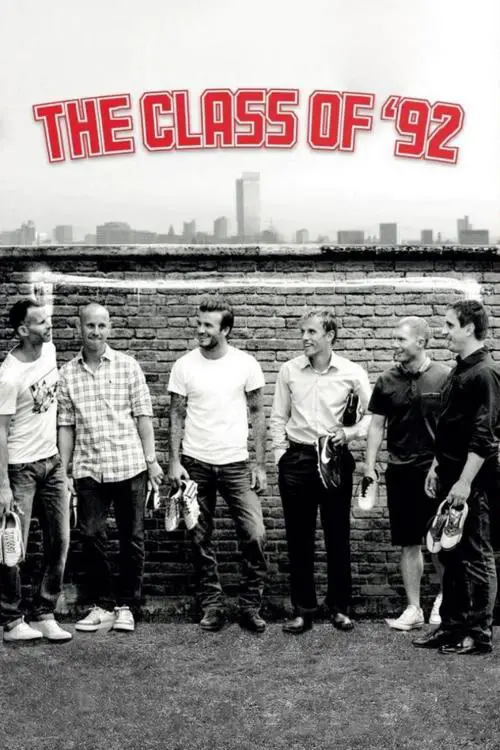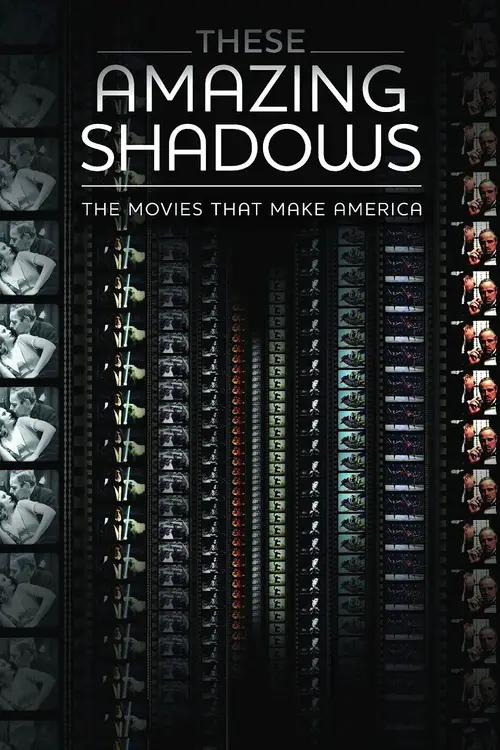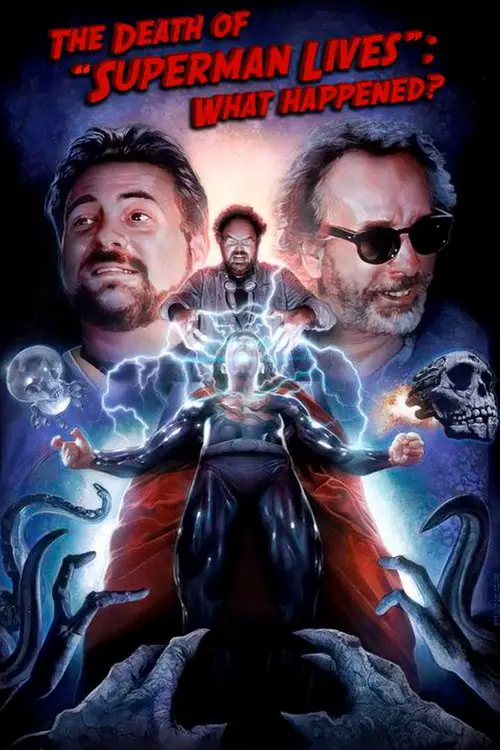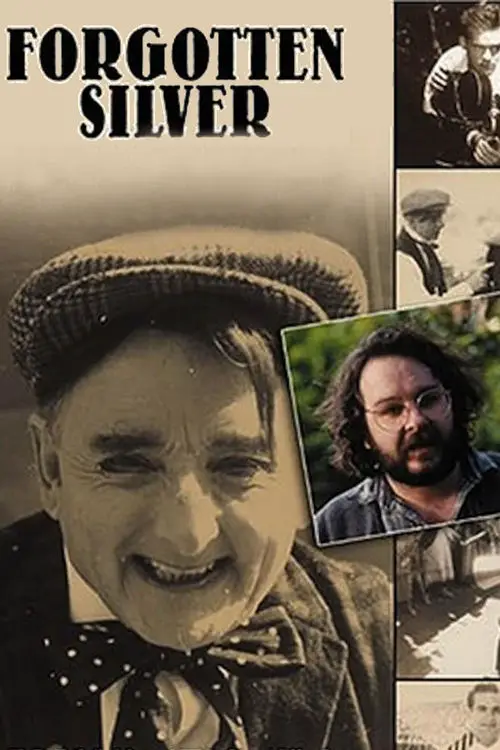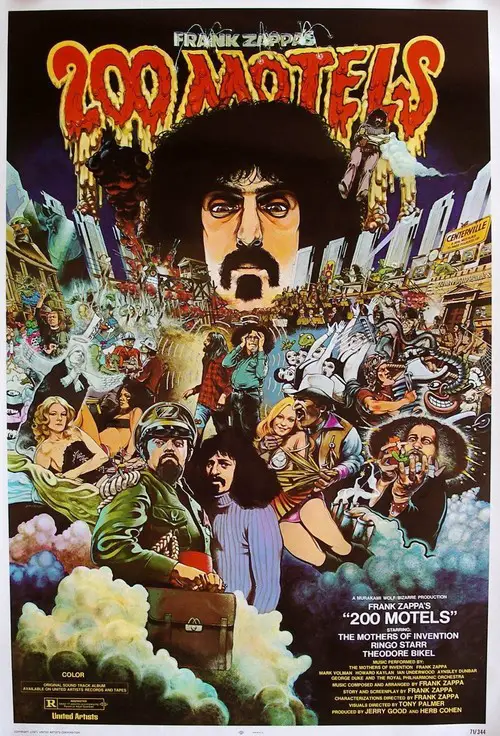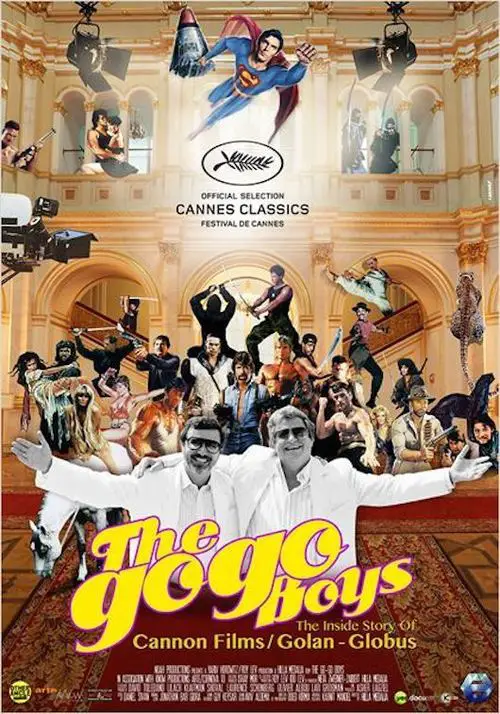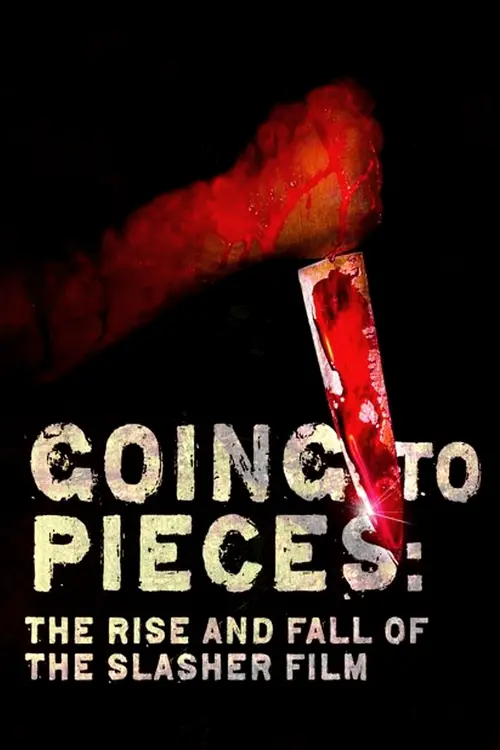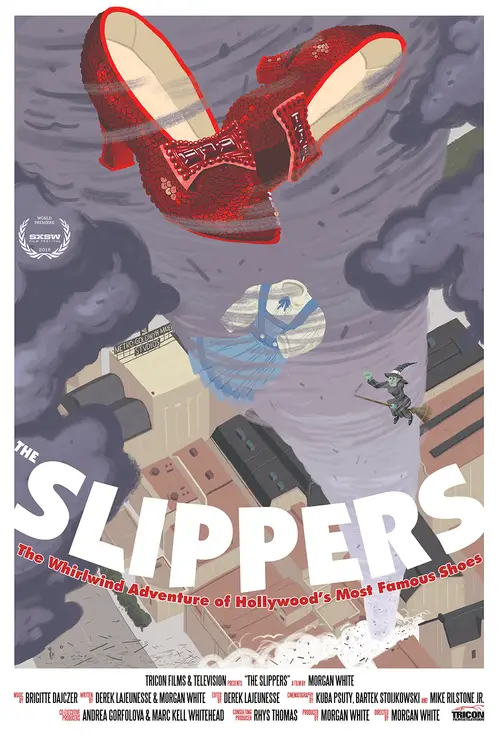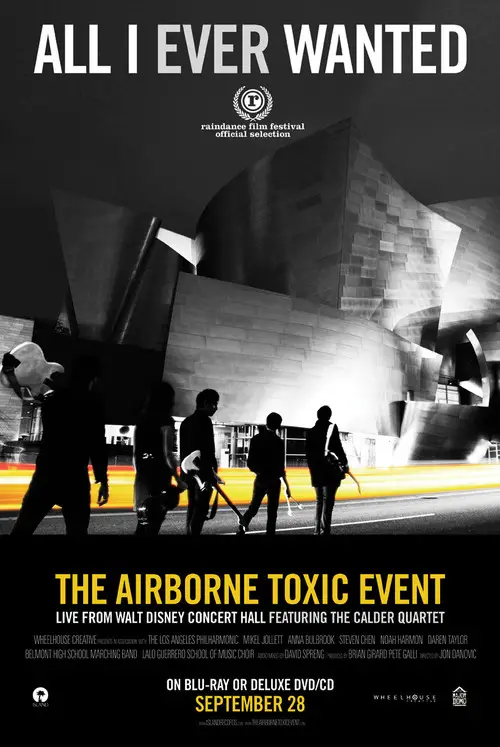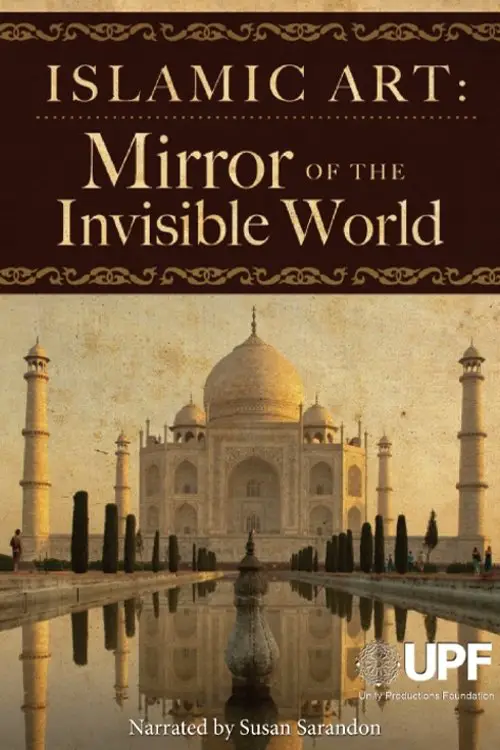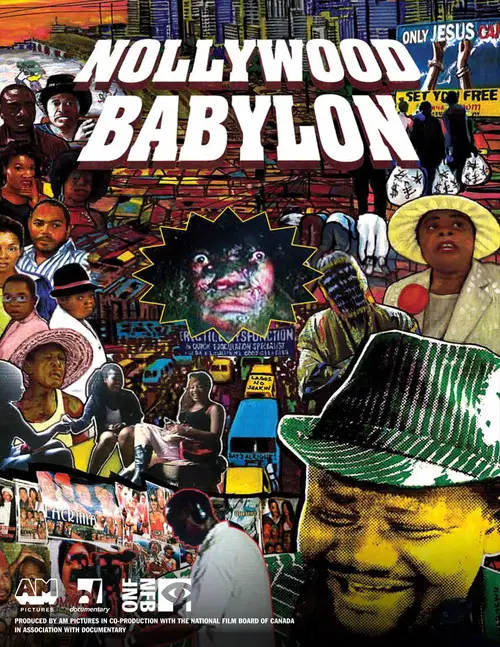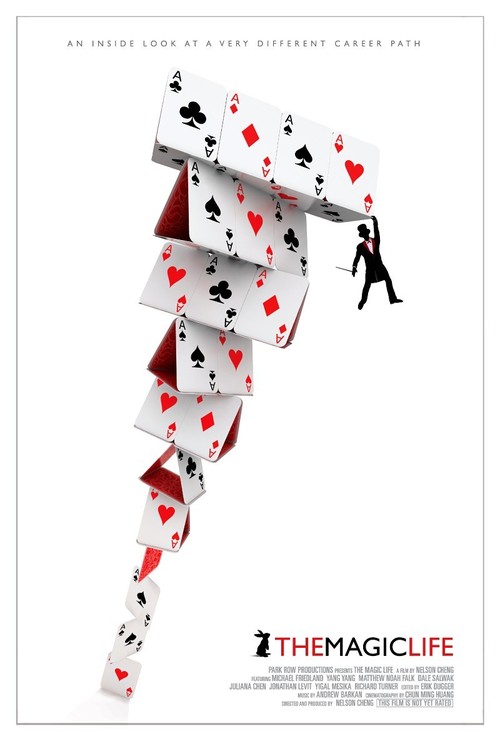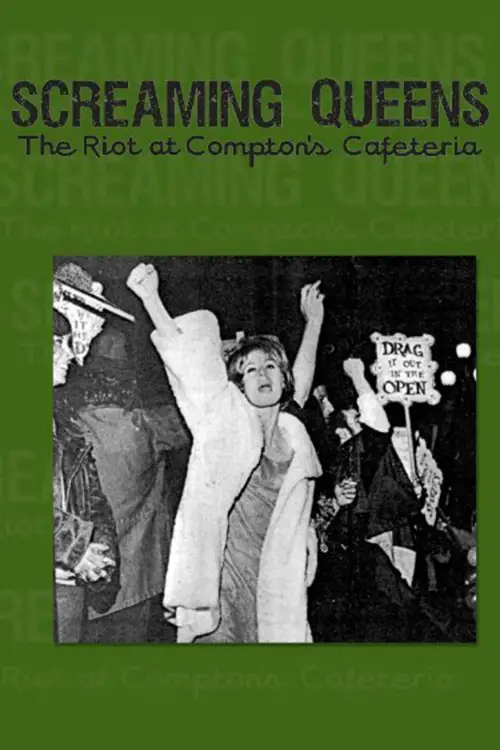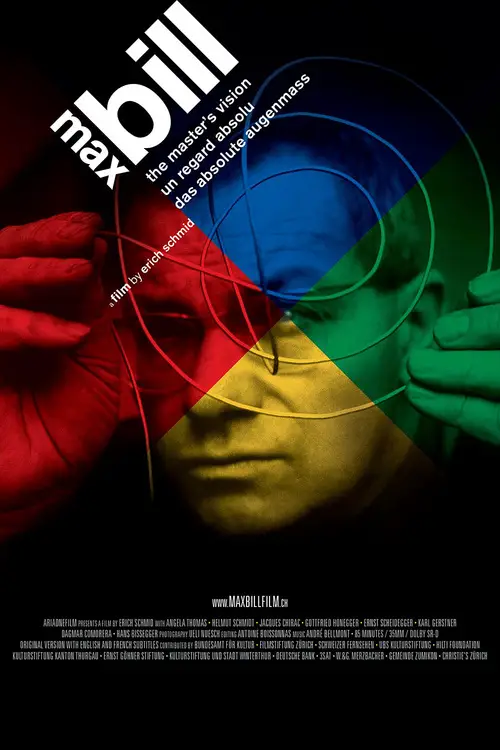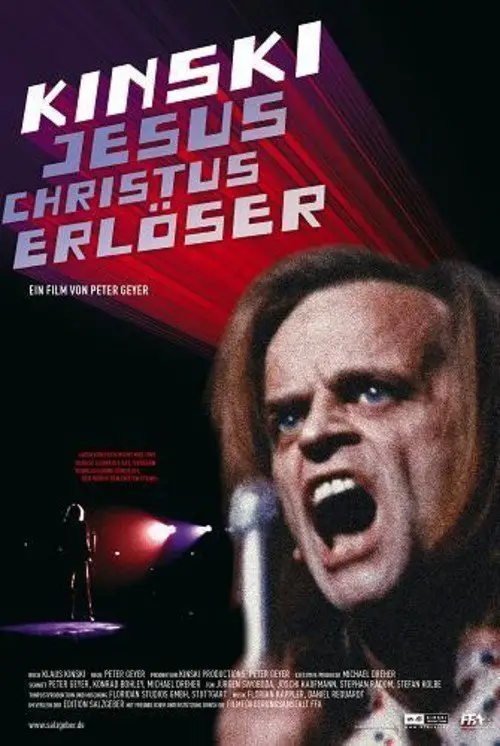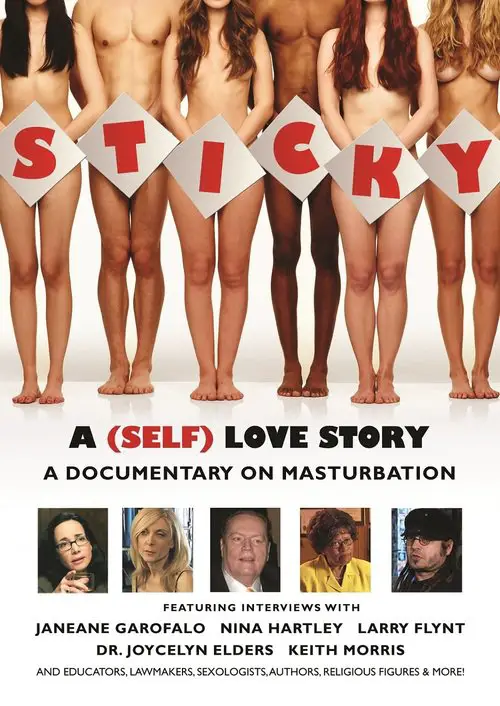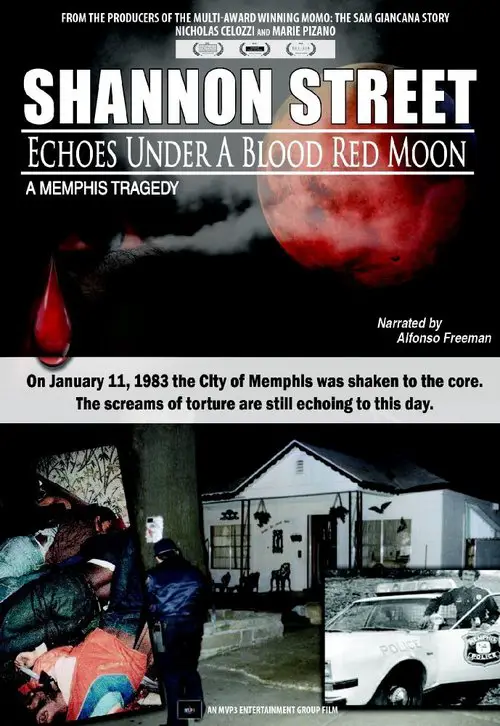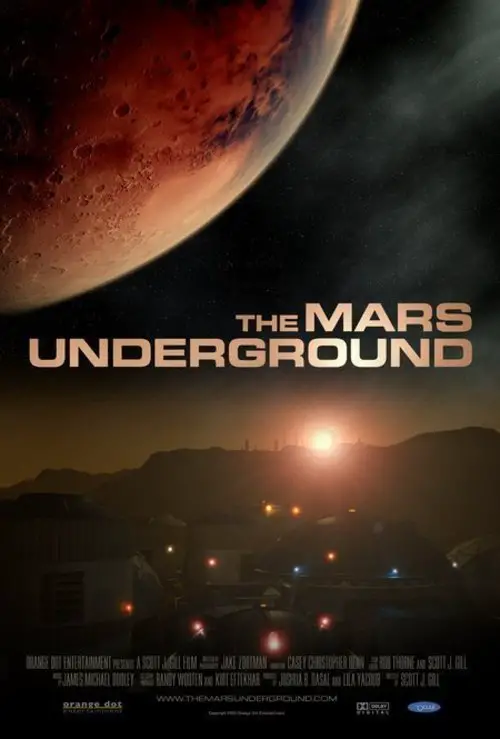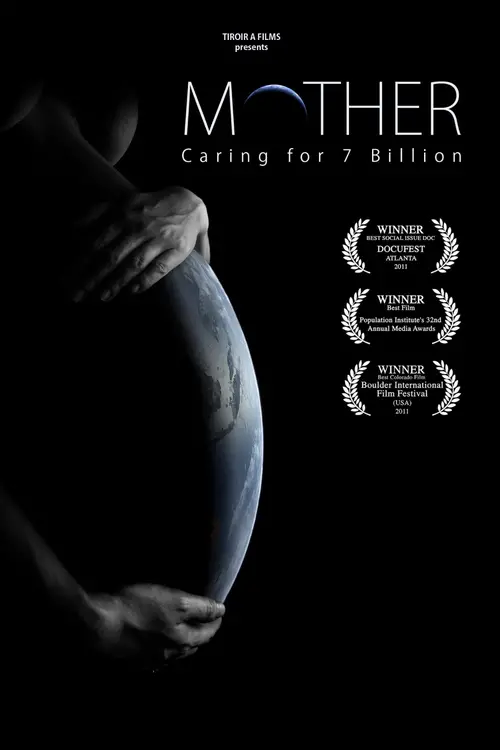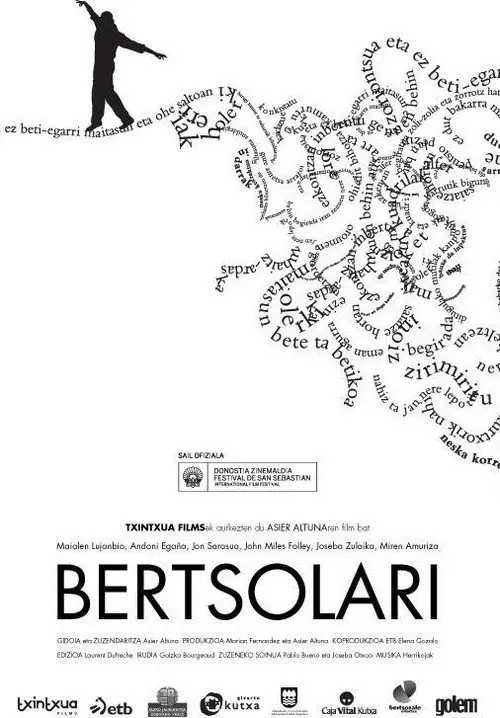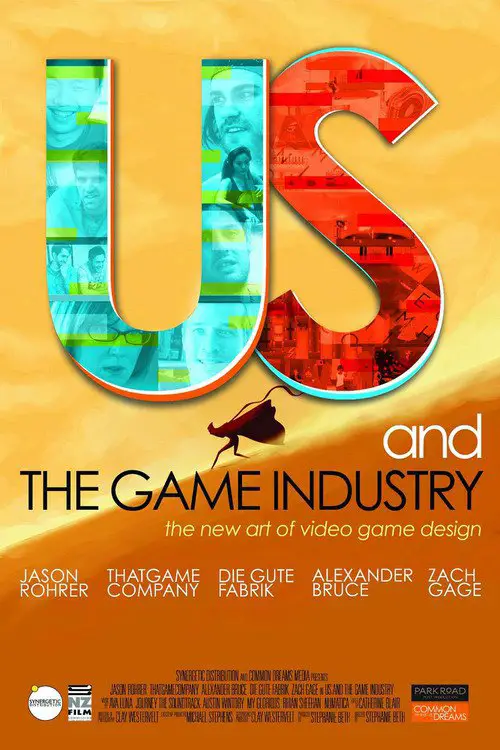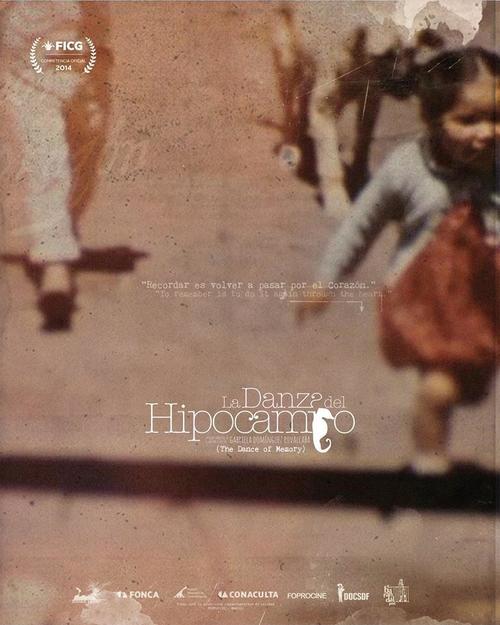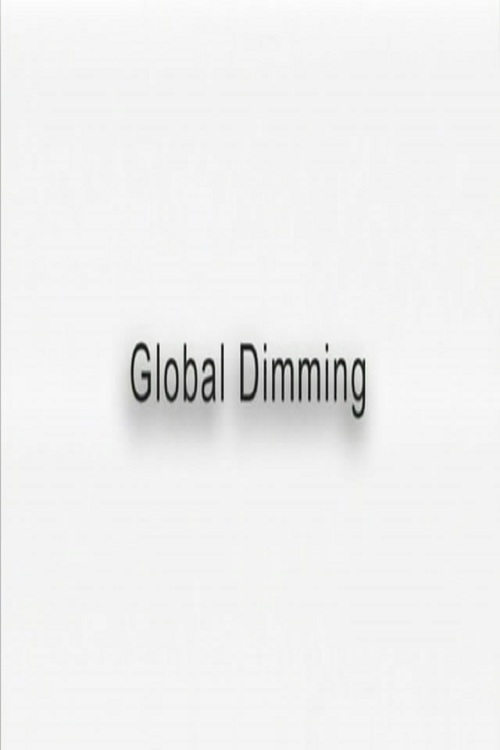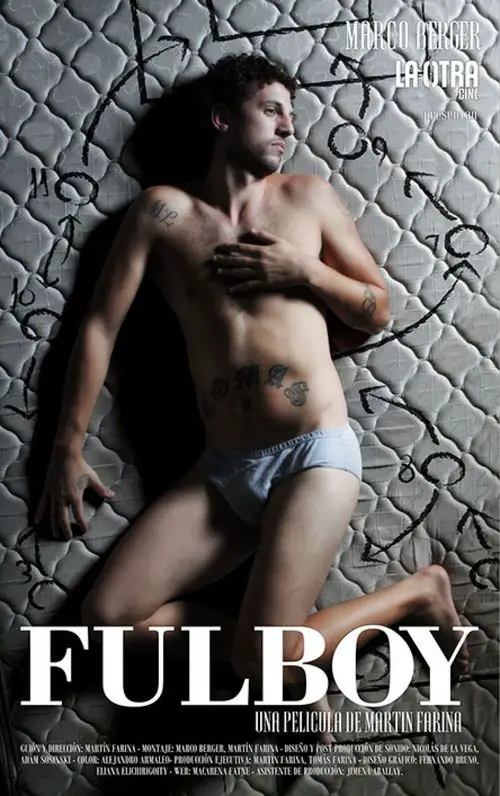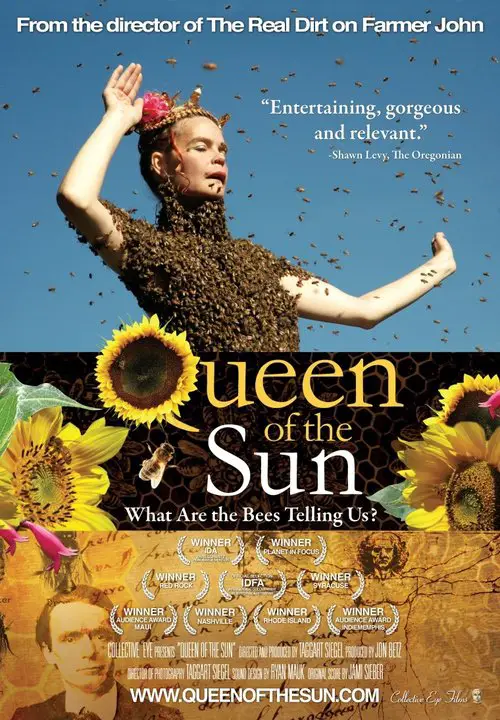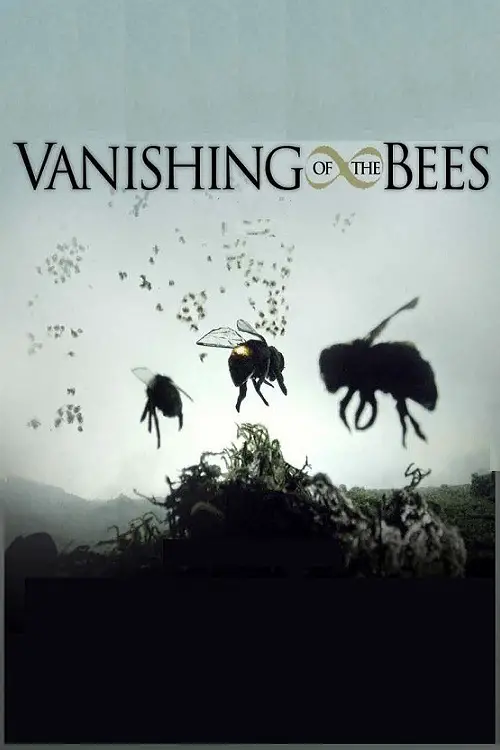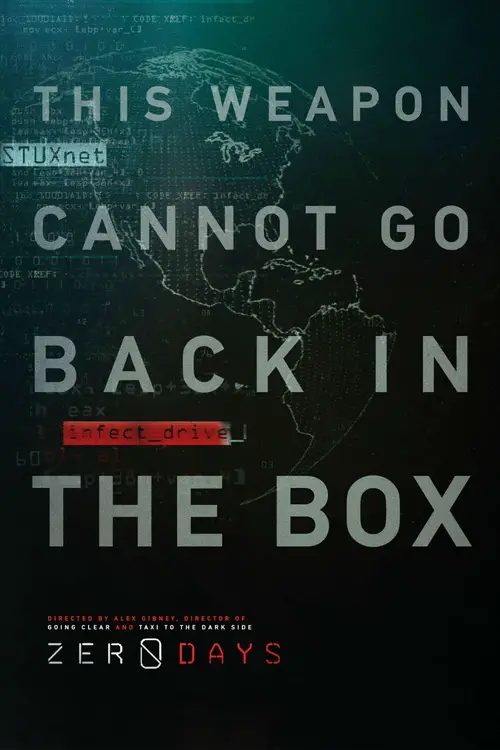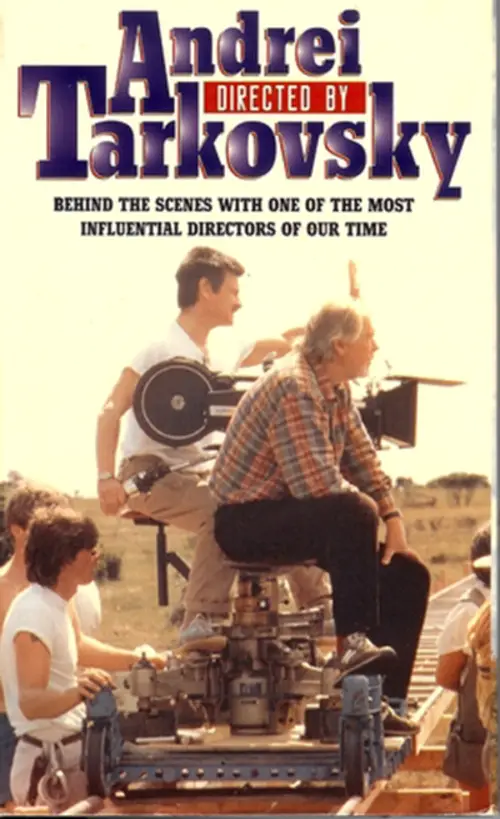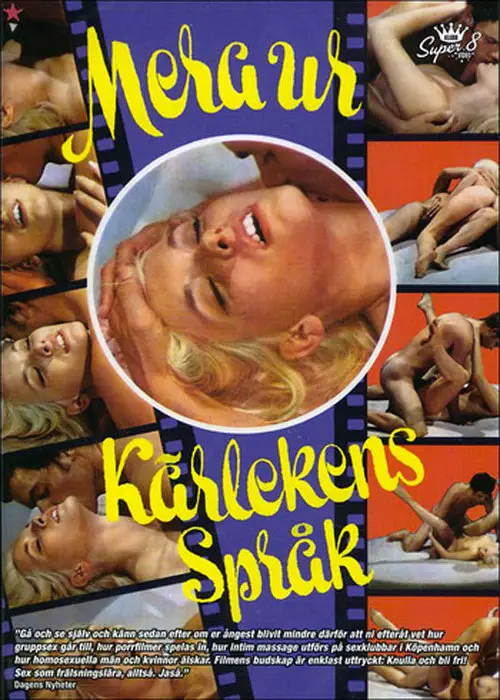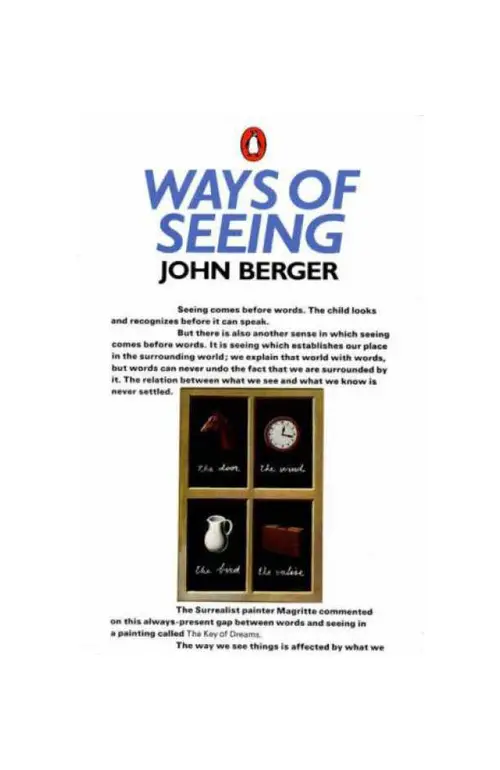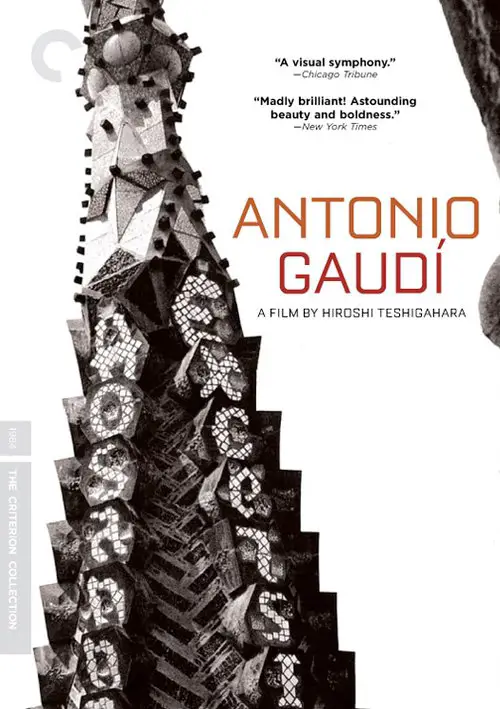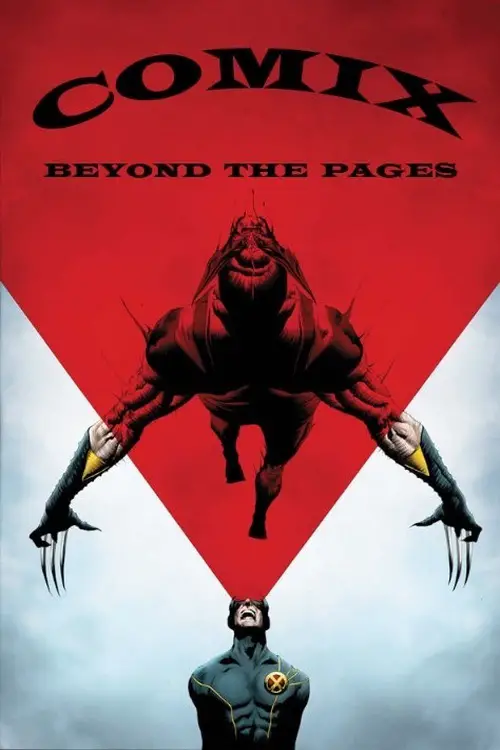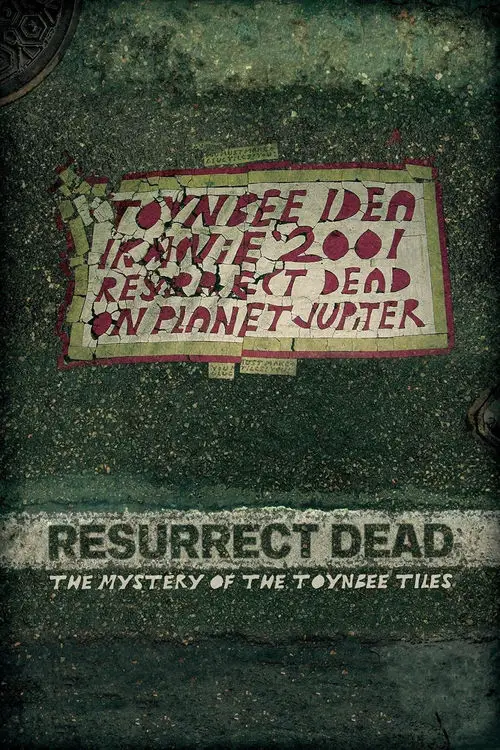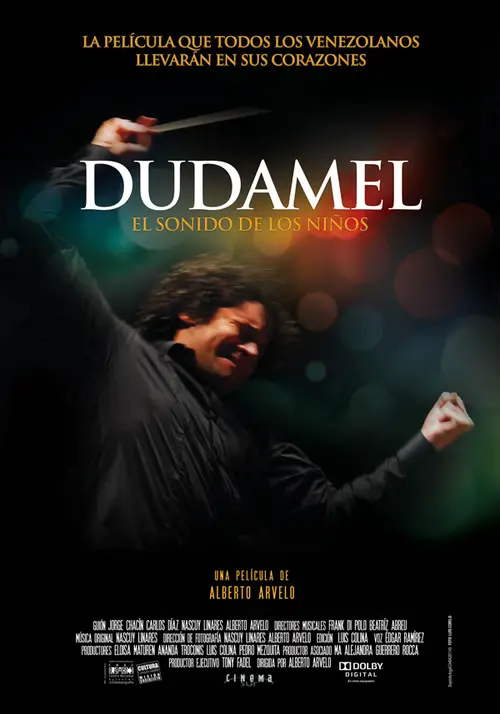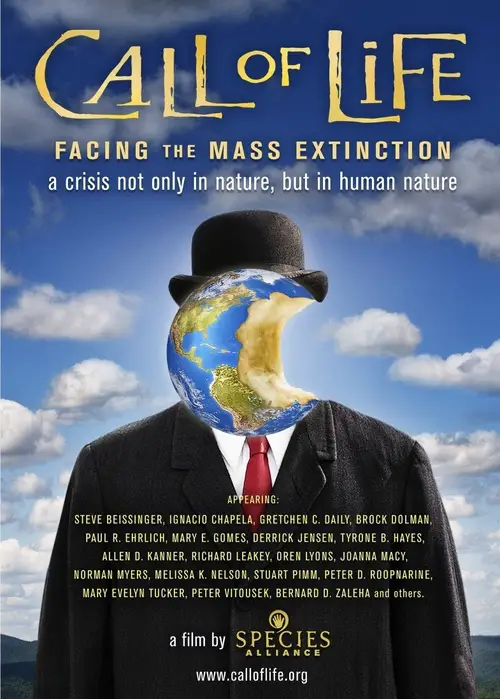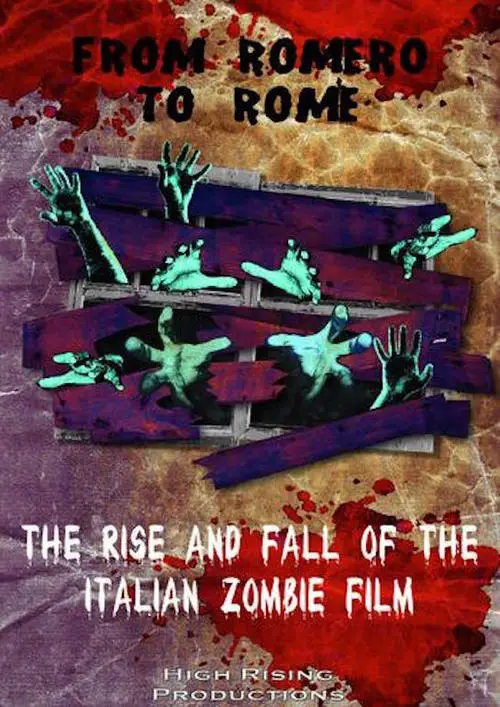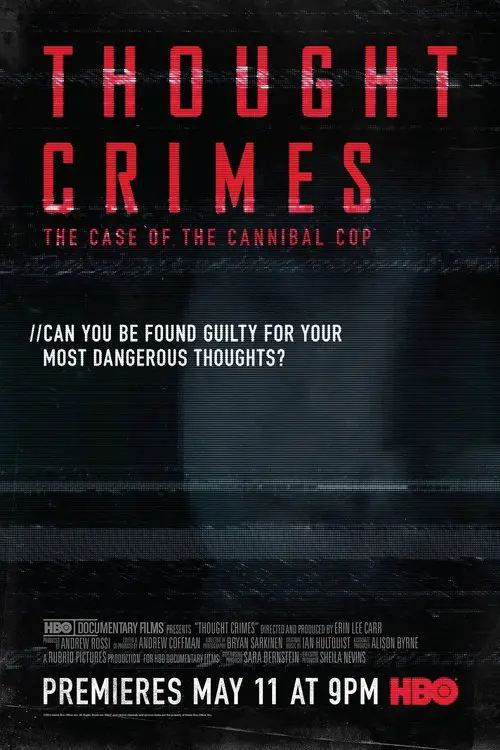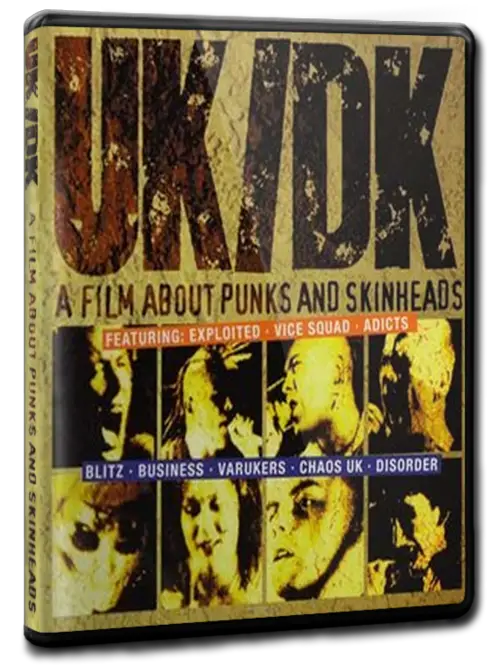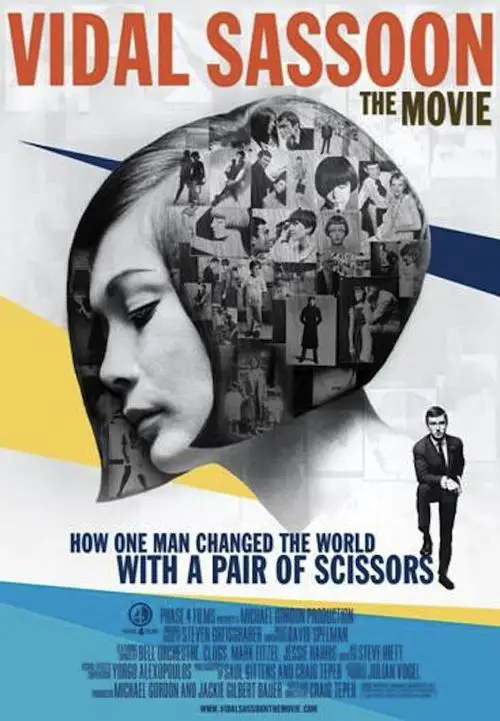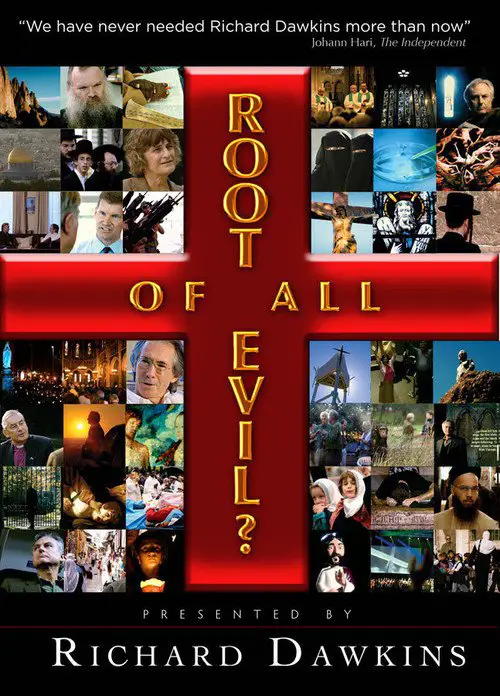Bottoms Up (2014)
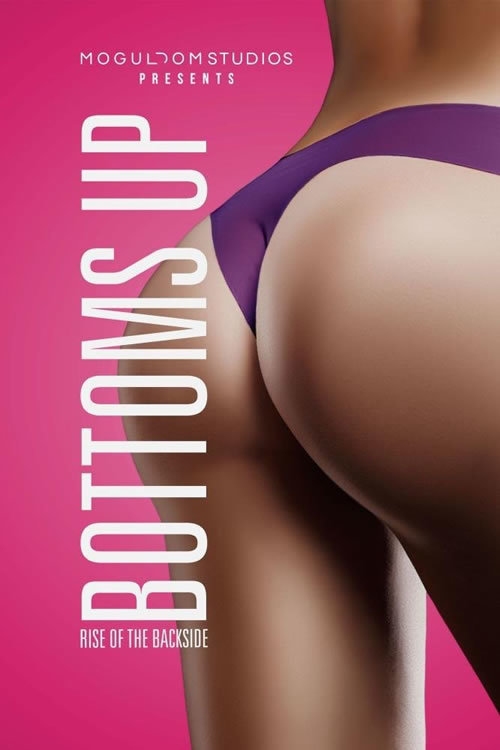
Similar movies
Maestro, tells the story of how a group of people found refuge and a call for life outside the mainstream. What evolved was a scene that set the ground work for what was to come in dance music culture worldwide, a rare insight into the secret underground world. It's the first time this story is told in a motion Picture, included in the film are pioneer dance music DJs and producers, "founding fathers", its center being Larry Levan, as well as high-profile DJs of today. Opting for a more personal and candid approach, MAESTRO shows the true history of the people through a realistic creative aesthetic. Tracing the underground's dance origin, MAESTRO brings out a real understanding of this intense lifestyle, and the lives they lived and died for. Written by Anonymous
Since the invention of cinema, the standard format for recording moving images has been film. Over the past two decades, a new form of digital filmmaking has emerged, creating a groundbreaking evolution in the medium. Keanu Reeves explores the development of cinema and the impact of digital filmmaking via in-depth interviews with Hollywood masters, such as James Cameron, David Fincher, David Lynch, Christopher Nolan, Martin Scorsese, George Lucas, Steven Soderbergh, and many more.
Hosted by Ben Stein, this controversial documentary examines how pro-intelligent design scholars and scientists are often chastised, fired or denied tenured positions by those who believe in Darwin's theory of evolution. Nathan Frankowski's film explores how scientists who believe in God are oppressed and how the acceptance of Darwinism might have played a role in the formation of the Nazi regime.
In GLOBAL METAL, directors Scot McFadyen and Sam Dunn set out to discover how the West's most maligned musical genre - heavy metal - has impacted the world's cultures beyond Europe and North America. The film follows metal fan and anthropologist Sam Dunn on a whirlwind journey through Asia, South America and the Middle East as he explores the underbelly of the world's emerging extreme music scenes; from Indonesian death metal to Chinese black metal to Iranian thrash metal. GLOBAL METAL reveals a worldwide community of metalheads who aren't just absorbing metal from the West - they're transforming it - creating a new form of cultural expression in societies dominated by conflict, corruption and mass-consumerism.
This film examines how media empires, led by Rupert Murdoch's Fox News, have been running a "race to the bottom" in television news, and provides an in-depth look at Fox News and the dangerous impact on society when a broad swath of media is controlled by one person. Media experts, including Jeff Cohen (FAIR) Bob McChesney (Free Press), Chellie Pingree (Common Cause), Jeff Chester (Center for Digital Democracy) and David Brock (Media Matters) provide context and guidance for the story of Fox News and its effect on society. This documentary also reveals the secrets of Former Fox news producers, reporters, bookers and writers who expose what it's like to work for Fox News. These former Fox employees talk about how they were forced to push a "right-wing" point of view or risk their jobs. Some have even chosen to remain anonymous in order to protect their current livelihoods. As one employee said "There's no sense of integrity as far as having a line that can't be crossed."
It takes two or three generations for the monarch butterfly to reach the Canadian breeding grounds, but it is one "supergeneration" that makes the 2,000 mile return trip back south into central Mexico. The documentary film covers Dr Fred Urquhart's interest in monarch butterflies, with perspectives of Urquhart as a child wondering where the butterflies went, his years of research and study into their life and migration, to his time decades-later as a senior scientist looking back at his investigations and discoveries about the insect's life pattern.
A documentary about the rise of six youth team players at Manchester United. From 1992 to 1999, the year of the Treble. Nicky Butt, Paul Scholes, the Neville brothers, Ryan Giggs and David Beckham give their insight to breaking into the first team and the emotions of playing at one of the biggest clubs in the world.
AMERICAN MOVIE is the story of filmmaker Mark Borchardt, his mission, and his dream. Spanning over two years of intense struggle with his film, his family, financial decline, and spiritual crisis, AMERICAN MOVIE is a portrayal of ambition, obsession, excess, and one man's quest for the American Dream.
Chronicling the controversial career of bad boys N.W.H. (Niggaz With Hats), this uproarious 'mockumentary' lampoons all of hardcore rap's hot-button issues. This underground laugh riot recounts the rise, fall and resurrection of a clueless bunch of would-be rappers, Ice Cold, Tone-Def & Tasty Taste performing as N.W.H.
The Death of 'Superman Lives': What Happened? feature film documents the process of development of the ill fated "Superman Lives" movie, that was to be directed by Tim Burton and star Nicolas Cage as the man of steel himself, Superman. The project went through years of development before the plug was pulled, and this documentary interviews the major players: Kevin Smith, Tim Burton, Jon Peters, Dan Gilroy, Colleen Atwood, Lorenzo di Bonaventura and many many more.
This dryly funny mockumentary about the lost work of a pioneering New Zealand film genius is probably one of the best examples of the faux-documentary genre. In fact, it was so successful that when it originally aired on New Zealand television, hundreds of viewers bought the premise hook, line, and sinker. If you didn't know any better yourself, it's entirely possible you might be duped into believing the extremely tall tale of one Colin MacKenzie, an ambitious filmmaker who made the world's first talking movie (years before The Jazz Singer), invented color film, and created a huge biblical epic that would put Cecil B. DeMille and D.W. Griffith to shame. Filmmaker Peter Jackson (Heavenly Creatures) shrewdly inserts himself into the film via his documentation of the "discovery" of McKenzie's lost epic, which for years was preserved in a garden shed.
"Touring makes you crazy," Frank Zappa says, explaining that the idea for this film came to him while the Mothers of Invention were touring. The story, interspersed with performances by the Mothers and the Royal Symphony Orchestra, is a tale of life on the road. The band members' main concerns are the search for groupies and the desire to get paid.
The Go-Go Boys tells the inside story of two Israeli-born cousins, the late Menahem Golan and Yoram Globus, who in pursuit of the âAmerican dreamâ turned the Hollywood establishment upside down. Together they produced more than 300 films and founded the most powerful independent film company in the world, Cannon Films, which was responsible for Israeli and mainstream, Hollywood-blockbuster, action/exploitation hits during the duoâs 1980s hey day, starring the likes of Chuck Norris, Jean-Claude Van Damme and Charles Bronson. Up close and personal, and with the complete cooperation of the filmâs subjects, the film examines the complex relationship between two contradictory personalities, whose combined force fueled their successes and eventual split. A film about filmmaking and two dogged, exceptional characters with modest origins taking on the big boys.
This historical and critical look at slasher films, which includes dozens of clips, begins with "Halloween," "Friday the 13th," and "Prom Night." The films' directors, writers, producers, and special effects creators comment on the films' making and success. During the Reagan years, the films get gorier, budgets get smaller, and their appeal wanes. Then, "Nightmare on Elm Street" revives the genre. Jump to the late 90s, when "Scream" brings humor and TV stars into the mix. Although some criticize the genre as misogynistic (Siskel and Ebert), most of the talking heads celebrate the films: as long as there are teenagers, there will be slasher films, says one.
The Big One is an investigative documentary from director Michael Moore who goes around the country asking why big American corporations produce their product abroad where labor is cheaper while so many Americans are unemployed, losing their jobs, and would happily be hired by such companies as Nike.
THE SLIPPERS pulls back the Wizardâs curtain on the unbelievable story and cultural impact of Dorothy's Ruby Slippers from The Wizard of Oz. Through first-hand accounts and archival interviews, THE SLIPPERS will detail the life of the Ruby Slippers after their sale at the famed 1970 MGM auction. Discovered by costumer Kent Warner, it is unclear how many pairs were found and how many pairs exist. That mystery has only helped to propel the shoes to the forefront of the Hollywood memorabilia market. They have been bought, stolen, and coveted by many. They are considered the most important piece of Hollywood memorabilia and the catalyst for the creation of Hollywood memorabilia collecting.
2008's critically acclaimed debut album by The Airborne Toxic Event propelled the group onto a world wide stage. They sold hundreds of thousands of albums. Their hit 'Sometime Around Midnight' was named iTunes #1 Alternative Song of the Year. After two years of selling out concerts around the world, the band finished by coming home and playing the most important show of their career. The LA Philharmonic asked the band to curate/perform their own show at the most prestigious musical building in the world, Frank Gehry designed Walt Disney Concert Hall in Los Angeles. All I Ever Wanted is not a concert film, it's a documentary about the struggles, pain and persistence of being in a family. This family happens to be a rock band.
This ninety-minute film takes audiences on an epic journey across nine countries and over 1,400 years of history. It explores themes such as the Word, Space, Ornament, Color and Water and presents the stories behind many great masterworks of Islamic Art and Architecture. Narrated by Academy Award winning performer Susan Sarandon, this dazzling documentary reveals the variety and diversity of Islamic art. It provides a window into Islamic culture and brings broad insights to the enduring themes that have propelled human history and fueled the rise of world civilization over the centuries
Nigeria's film industry, Nollywood, is the third-largest in the world--an unstoppable economic and cultural force that has taken the continent by storm and is now bursting beyond the borders of Africa. "Nollywood Babylon" is a feature documentary detailing the industry's phenomenal success. Propelled by a booming 1970s soundtrack of African underground music, the movie presents an electric vision of a modern African metropolis and a revealing look at the powerhouse that is Nigerian cinema.
"The Magic Life" chronicles the journey of three magician hopefuls: a 17-year-old from Beijing who travels to the U.S. to attend magic school, a 25-year-old trying to make rent by performing on Hollywood Blvd for tips, and a 32-year-old New York University MBA graduate who moves to Los Angeles to perform at the world famous Magic Castle. The film depicts the challenges of following an unconventional career path. Forget about parents, family, or friends who may not understand or support your choices - there's almost an invisible societal pressure in terms of what types of jobs are acceptable. "The Magic Life" is about those who are willing to risk everything to take the road not normally taken. Sometimes the risk pays off, sometimes it doesn't.
The first major uprising against police brutality, harassment, and societal oppression was not at Stonewall in 1969, but at Compton's Cafeteria in San Francisco three years earlier. Those who stood up were trans women and gay men. Now, nearly 40 years on, Susan Stryker and Victor Silverman tell the story of this oft-overlooked event in the history of American civil rights.
The film about Max Bill (1908-1994) moves between the dynamic fields of art, aesthetics and politics. Max Bill was probably the most important swiss artist of the 20th century and the most famous student to come out of the legendary Bauhaus in Dessau. He was an ardent anti-fascist and all his avant-garde work as an artist, sculptor, architect and typographer showed a social responsibility and environmental awareness right through his life. His views have become incredibly topical.
Chronicles the history, ideology and aesthetic of Norwegian black metal - a musical subculture infamous as much for a series of murders and church arsons as it is for its unique musical and visual aesthetics. This is the first (and only) film to truly shed light on a movement that has heretofore been shrouded in darkness and rumor and obscured by inaccurate and shallow depictions. Featuring exclusive interviews and verité with the musicians, a wealth of rare, seldom seen footage from the "Inner Circle's earliest days, Until the Light Takes Us explores every aspect of the controversial movement that has captured the attention of the world. This is the movie that gets inside the minds and hearts of black metal's musicians.
Helvetica is a feature-length independent film about typography, graphic design and global visual culture. It looks at the proliferation of one typeface (which will celebrate its 50th birthday in 2007) as part of a larger conversation about the way type affects our lives. The film is an exploration of urban spaces in major cities and the type that inhabits them, and a fluid discussion with renowned designers about their work, the creative process, and the choices and aesthetics behind their use of type.
Klaus Kinski has perhaps the most ferocious reputation of all screen actors: his volatility was documented to electrifying effect in Werner Herzogâs 1999 portrait My Best Fiend. This documentary provides further fascinating insight into the talent and the tantrums of the great man. Beset by hecklers, Kinski tries to deliver an epic monologue about the life of Christ (with whom he perhaps identifies a little too closely). The performance becomes a stand-off, as Kinski fights for control of the crowd and alters the words to bait his tormentors. Indispensable for Kinski fans, and a riveting introduction for newcomers, this is a unique document, which Variety called âa time capsule of societal ideals and personal demons.â
"Sticky" is everything your mother was too embarrassed to tell you about masturbation, in one stimulating documentary. Full of candid interviews from celebrated figures to everyday people, health care professionals, sex therapists, zoologists, anthropologists, and religious figures, this feature length doc answers age-old questions like: What is masturbation? Will it make me go blind? Is it "normal"? Is it wrong? And why are we so afraid to be caught in the act? In a world where confusion about sexuality remains at the root of so many societal problems - rape, sexual abuse, and the threat of sexually transmitted diseases - "Sticky" will help shatter misconceptions and myths surrounding this intimate aspect of human sexuality.
This documentary reflects on the 1983, thirty-hour hostage siege at Shannon Street in Memphis, TN. It compares that era to the current societal events of religion, racism, police involved shootings of civilians and the death of police officers. While briefly touching on the proactive approaches by law enforcement enacted since the siege, interviewees reflect on the emotional impact the incident had on their personal lives.
Mother, the film, breaks a 40-year taboo by bringing to light an issue that silently fuels our largest environmental, humanitarian and social crises - population growth. Since the 1960s the world population has nearly doubled, adding more than 3 billion people. At the same time, talking about population has become politically incorrect because of the sensitivity of the issues surrounding the topic- religion, economics, family planning and gender inequality. The film illustrates both the over consumption and the inequity side of the population issue by following Beth, a mother, a child-rights activist and the last sibling of a large American family of twelve, as she discovers the thorny complexities of the population dilemma and highlights a different path to solve it.
Vancouver-based voice artist Ashleigh Ball has been the voice of numerous characters in classic cartoons such as Care Bears, Strawberry Shortcake, Cinderella and more. When Ashleigh was hired to voice Apple Jack and Rainbow Dash for Hasbro's fourth series to use the My Little Pony name - My Little Pony: Friendship Is Magic - she had no idea she would become an Internet phenomenon and major celebrity to a worldwide fan-base of grownups. Bronies are united by their belief in the show's philosophy. This documentary gives an inside view of the Pony fan-world, and an intimate look at the courage it takes to just be yourself...even when that means liking a little girls' cartoon.
The "bertsolari" is a kind of minstrel sings and improvises verses in Basque. This oral tradition has evolved with the times and connecting with younger generations, getting to meet at the end of the last championship to 14 thousand people. An austere aesthetic art of surprising in this age of spectacle and special effects.
Dan Cruickshank explores the rich aesthetic of Ludwig II - from the mock-medievalism of Neuschwanstein the iconic fairytale castle, which became the inspiration for Walt Disney's Sleeping Beauty castle, to the rich Baroque splendour of Herrenchiemsee, Ludwig's answer to Versailles. Dan argues that Ludwig's castles are more than flamboyant kitsch and are, in fact, the key to unravelling the eternal enigma of Ludwig II.
This film follows several independent game developers (Jason Rohrer, thatgamecompany, Douglas Wilson, Zach Gage, Aledander Bruce) examining why they make digital games. The film delves into their creativity and explores some of their thinking and design strategies. Game developers operate in terrain that demands both programming logic and aesthetic quality. The work is hard, however that's what they want to do. The film explores how the developers go deeper into the notion of entertainment and discovery.
Memory mechanisms are mysterious: we only see the stories we choose in order to construct our own reality. Every mark is a message in time, the invocation of an absence. To travel in the memory is to walk in time, zigzagging, a long road permeated by a dark, indecipherable logic⦠if we could choose seven moments to sum up our entire life, which ones would they be? The Dance of the Memory is a documentary-essay that guides us in that autobiographical search, where image and memory intertwine. It mixes archive material with an aesthetic and subjective tone.
This may be the one of the most important Horizon films of recent years. Climate scientists have just discovered a phenomenon that threatens to disrupt our world. It may already have contributed to the deaths of hundreds of thousands through drought and famine. Unchecked, it will strike again. The good news is that there is a cure. The bad news is that the cure may be worse than the disease. If they are right, then in tackling the one problem, we may unleash a climate catastrophe on our planet. This is a film about stark choices and about the dawning realisation that all our predictions about the world's climate may be completely wrong. At its heart is something that scientists are calling "global dimming".
On the verge of achieving his dream career, Tomás allows his older brother Martin Farina an inside look at his life as a professional football player. Martin, never able to fulfill his own dream of playing football, steps into the world of Tomás and his teammates through the lens of his camera. However, the rest of the club has their own opinions, some viewing Martin as an intruder, as he exposes their most vulnerable moments, and their concerns for the future after the game has ended. Fulboy offers an uncensored, confessional look at how the athletes behind the most popular sport in the world behave during their time off the field. At the same time, Fulboy reflexively interrogates Farina's aesthetic choices and point-of-view, as well as the viewer's gaze at the male form.
In 1923, Rudolf Steiner, an Austrian scientist, philosopher & social innovator, predicted that in 80 to 100 years honeybees would collapse. Now, beekeepers around the United States and around the world are reporting an incredible loss of honeybees, a phenomenon deemed "Colony Collapse Disorder." This "pandemic" is indicated by bees disappearing in mass numbers from their hives with no clear single explanation. The queen is there, honey is there, but the bees are gone. For the first time, in an alarming inquiry into the insights behind Steiner's prediction QUEEN OF THE SUN: What Are the Bees Telling Us? investigates the long-term causes behind the dire global bee crisis through the eyes of biodynamic beekeepers, commercial beekeepers, scientists and philosophers.
This documentary takes a piercing investigative look at the economic, political and ecological implications of the worldwide disappearance of the honeybee. The film examines our current agricultural landscape and celebrates the ancient and sacred connection between man and the honeybee. The story highlights the positive changes that have resulted due to the tragic phenomenon known as "Colony Collapse Disorder." To empower the audience, the documentary provides viewers with tangible solutions they can apply to their everyday lives. Vanishing of the Bees unfolds as a dramatic tale of science and mystery, illuminating this extraordinary crisis and its greater meaning about the relationship between humankind and Mother Earth. The bees have a message - but will we listen?
Alex Gibney explores the phenomenon of Stuxnet, a self-replicating computer virus discovered in 2010 by international IT experts. Evidently commissioned by the US and Israeli governments, this malware was designed to specifically sabotage Iranâs nuclear programme. However, the complex computer worm ended up not only infecting its intended target but also spreading uncontrollably.
This documentary offers a rare glimpse of the legendary Soviet filmmaker, Andrei Tarkosvky, at work. Tarkovsky made only seven films in his brief, but brilliant, career; Michal Leszczylowski's respectful movie chronicles him at work on his last film, The Sacrifice. Offering insight into Tarkovsky's working methods and transcendental aesthetics, the movie is a compelling account of the difficulties of film production. In the case of an uncompromising and visionary filmmaker like Tarkovsky, the practical problems of filmmaking are only magnified, as cast and crew struggle to realize the ambitious concepts in Tarkovsky's mind.
While LANGUAGE OF LOVE illustrated general sex behaviour, MORE ABOUT THE LANGUAGE OF LOVE shows minority group attitudes towards sex. As in the first film, there is an expert panel of scientist, discussing and explaining the different parts of the film. The famous Danish sexologist couple Inge and Sten Hegeler are throughout the leading characters, while the others experts change in every sector. The headings are as follows: male and female homosexuality, aesthetics and sex, handicapped and sex, drugs and sex, pornography and sex, children and sex, and sex with old people. In the new film affliction and warmth are emphasised, particularly in the chapter showing coition between persons of the same sex.
Ways of Seeing is a 1972 BBC four-part television series of 30-minute films created chiefly by writer John Berger and producer Mike Dibb. Berger's scripts were adapted into a book of the same name. The series and book criticize traditional Western cultural aesthetics by raising questions about hidden ideologies in visual images. The series is partially a response to Kenneth Clark's Civilisation series, which represents a more traditionalist view of the Western artistic and cultural canon.
Catalan architect Antonio Gaudà (1852 - 1926) designed some of the world s most astonishing buildings, interiors, and parks; Japanese director Hiroshi Teshigahara constructed some of the most aesthetically audacious films of the second half of the twentieth century. Here, their artistry melds in a unique, enthralling cinematic experience. Less a documentary than a visual poem, Teshigahara's Antonio Gaudà takes viewers on a tour of Gaudàs truly spectacular architecture, including his massive still-unfinished masterpiece, the Sagrada Familia cathedral, in Barcelona. With camerawork as bold and sensual as the curves on his subject s organic surfaces, Teshigahara immortalizes Gaudà on film.
COMIX is a feature documentary on comic books, the comic book world, and the phenomenon surrounding them. It is told through the thoughts and images of some of the greatest talent in the comic book industry like Stan Lee, Frank Miller, Neal Adams, Mark Waid, Marc Silvestri, and John Romita Jr., among many others. COMIX also has tons of interviews with the fans, many in full costumes, as they share their love for the art form, and who have made comics the phenomenon that it is today.
Happy Berry is the name of a Bangkok boutique run by a group of trendy Thai youths, and is the nerve centre of this fly-on-the-wall documentary (the second in a trilogy entitled "Life and Love"). The camera catches the subjects indulging in all the (post) modern lifestyle trends: drugs, kinky sex, hip-hop, fashion, exhibitionism, narcissism. They are uninhibited, the kind of youth who break down barriers in a supposedly traditional and religious society, but perhaps that's just on the surface. Behind the upbeat tone is a probing examination of values and attitudes in modern youth relationships. Happiness may be deceptive but there's certainly a lot of fun in the Happy Berry.
Hundreds of children and youth orchestras around the world are emerging musical inspired by the Venezuelan phenomenon known as "The System." This rebellion of thousands of children are being held internationally to give children everywhere the opportunity to grow in an atmosphere of creativity, companionship, entertainment, art, discipline and high social values. The brilliant and charismatic Venezuelan conductor Gustavo Dudamel leads to an unforgettable journey to some of the most remote corners of the world, about the transformative stories of a group of children who bring us a clear and powerful message: "music is a universal right. "
Filmed in seven countries, Dudamel: the sound of children is a journey into the bowels of this global phenomenon that elevates the importance of art as a spiritual weapon against a dehumanized world.
The first feature-length documentary film to fully investigate the growing threat to Earth's life-support systems from the loss of biodiversity. If current trends continue, scientists warn that half or more of all plant and animal species on Earth will become extinct within the next few decades. Call of Life investigates the scope, the causes, and the predicted effects of this unprecedented loss of life, but also looks deeper, at the ways in which both culture and psychology have helped to create and perpetuate the situation. The film not only tells the story of a crisis in nature, but also in human nature, a crisis more complex and threatening than anything human beings have ever faced before.
Filmed live at London's Rainbow Theatre in December 1972, the innovative group Yes performs its progressive rock symphonies -- epic compositions that influenced new trends in contemporary music. "Yessongs" provides a visual record of the concert tour that became a groundbreaking tour de force in rock music. This unique concert video of Yes was filmed during their record-breaking tour and features the talents of the five original band members. The massively popular band defined the prog rock movement with their mystical epics which infused both a Medieval and Classical sound into rock music. Titles performed include "Close to the Edge," "All Good People," and "Roundabout."
Dubbed âThe Cannibal Cop,â former NYPD officer Gilberto Valle was convicted of conspiring to kidnap and eat women in March 2013. Valle had argued it was all a fantasy, but the prosecutionâs narrative convinced jurors otherwise. His story made headlines not only for its chilling details, but also because of its landmark decision regarding a man many consider âpatient zeroâ in a growing thought-police trend across the nation. Featuring unprecedented, intimate interviews with Valle and his family, as well as insights from lawyers, journalists, psychological professionals and criminal experts, THOUGHT CRIMES: THE CASE OF THE CANNIBAL COP explores this complicated case, asking if someone can be found guilty for his or her most dangerous thoughts.
Featuring interviews, live concert footage, and a feature on how punk was transformed from a trend to a way of life, UK/DK is a comprehensive look at the skinhead/punk movement. Some of the most notorious bands on the scene are featured, including The Exploited, The Vice Squad, The Adicts and many more.
In this two-part Channel 4 series, Professor Richard Dawkins challenges what he describes as 'a process of non-thinking called faith'. He describes his astonishment that, at the start of the 21st century, religious faith is gaining ground in the face of rational, scientific truth. Science, based on scepticism, investigation and evidence, must continuously test its own concepts and claims. Faith, by definition, defies evidence: it is untested and unshakeable, and is therefore in direct contradiction with science. In addition, though religions preach morality, peace and hope, in fact, says Dawkins, they bring intolerance, violence and destruction. The growth of extreme fundamentalism in so many religions across the world not only endangers humanity but, he argues, is in conflict with the trend over thousands of years of history for humanity to progress to become more enlightened and more tolerant.
© Valossa 2015–2026
| Privacy Policy
